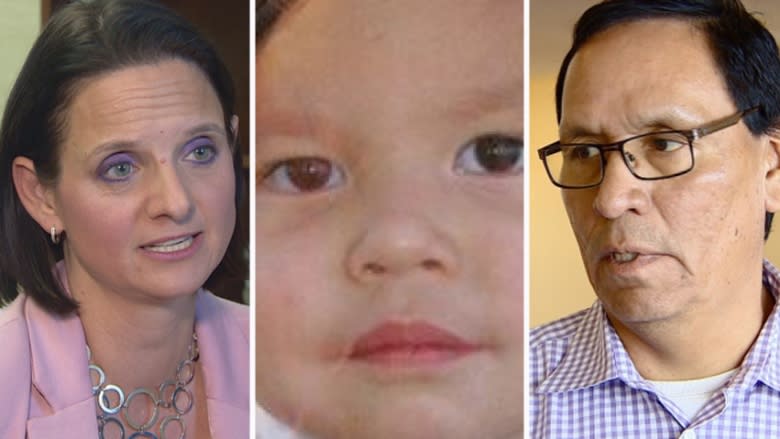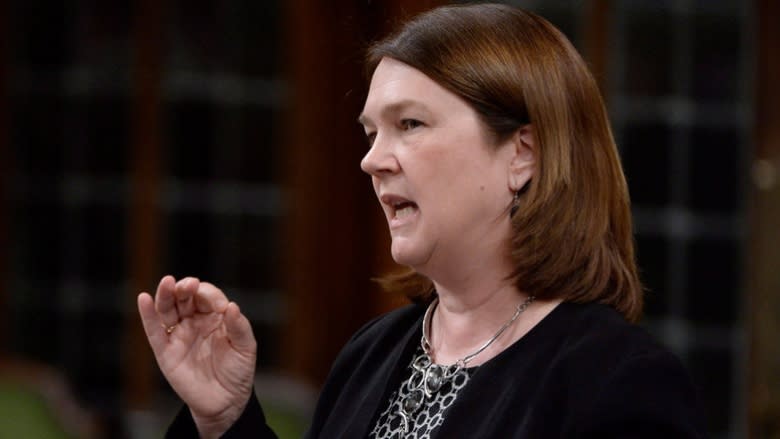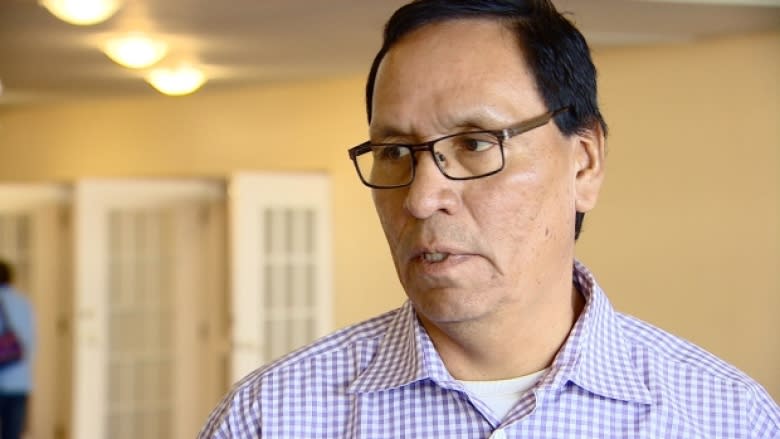Alberta Indigenous leaders hope emergency summit leads to 'bringing the kids home'
Indigenous leaders from Alberta are holding out hope that a first-of-its-kind national meeting on child welfare will finally lead to changes they've been demanding for years.
Their misgivings about the alarming rates of Indigenous children in government care are the focus of what's being described as an "emergency summit" in Ottawa next week.
"It's a start and we need to all work together to work for our kids in care," said Craig Makinaw, who will be attending the summit as the Alberta Regional Chief of the Assembly of First Nations.
Federal Indigenous Services Minister Jane Philpott called the meeting, describing the over-representation of Indigenous children in the child welfare system as reminiscent of the residential school system.
"Children are being scooped up from their homes, taken away from their family and we will pay the price for this for generations to come," Philpott said in November, when she made the request for the meeting.
Philpott has invited Indigenous leaders and child welfare experts, as well as provincial and territorial governments, to the meeting, which will also include a number of young people with first-hand experience of the system.
While Indigenous youth make up 10 per cent of the youth population in Alberta, they account for about 70 per cent of all children in care, according to the provincial child and youth advocate.
The Alberta government has described the percentage as distressing. Makinaw said it's good to see a targeted plan for Indigenous children "so that they can have a better life and we can start bringing the kids home," he said.
Alberta Children's Services Minister Danielle Larivee said the over-representation of Indigenous children in care is traumatic for their families and communities.
She said the province is committed to reconciliation and has been working hard on the issue in advance of this meeting, pointing to the ministerial panel on child intervention aimed at improving the system, among other initiatives.
Larivee said a longstanding issue that continues to create barriers for Indigenous children in care is the fact kids who live on reserve still don't get access to the same services as those off reserve.
"There is clearly a disparity in terms of services," Larivee said. "We need to come together and address that."
Philpott's department said investments were made in the 2016 federal budget which, in part, address the inequalities in funding.
That followed a ruling by the Canadian Human Rights Tribunal which called for a redesign of the child welfare funding model.
More money is expected in the 2018 budget.
"They've indicated they're committed to taking action on that and so have we, so I think we're expecting them to step us as a partner in this," Larivee said.
Representatives from some Alberta band councils and the Métis Nation of Alberta will be heading to Ottawa for the meetings.
Serenity's mother hopeful for change
Donald Langford from Métis Child and Family Services said his program manager will be part of the summit.
He said her message would be one of more inclusion for Indigenous people in planning and decision-making with families.
One of the Alberta parents who has been at the forefront of pleading for changes has a similar request.
The mother of four-year-old Serenity, who died from catastrophic injuries in 2014 after being placed in care, said she doesn't want anyone to go through what she did.
"There are probably a lot of kids out there that should be with their parents," she said. "As soon as my kids went into care they were harmed and nobody really listened."
The little girl's legal guardians have since been charged.
While still struggling with grief every day, Serenity's mother said she was pleased to hear the system is being examined on a national level.
The summit, expected to bring together up to 250 people, is being held Jan. 25 and 26.
The goal is for those in attendance to draw up a plan with a shared set of principles and actions to reduce the numbers of Indigenous children in care.




